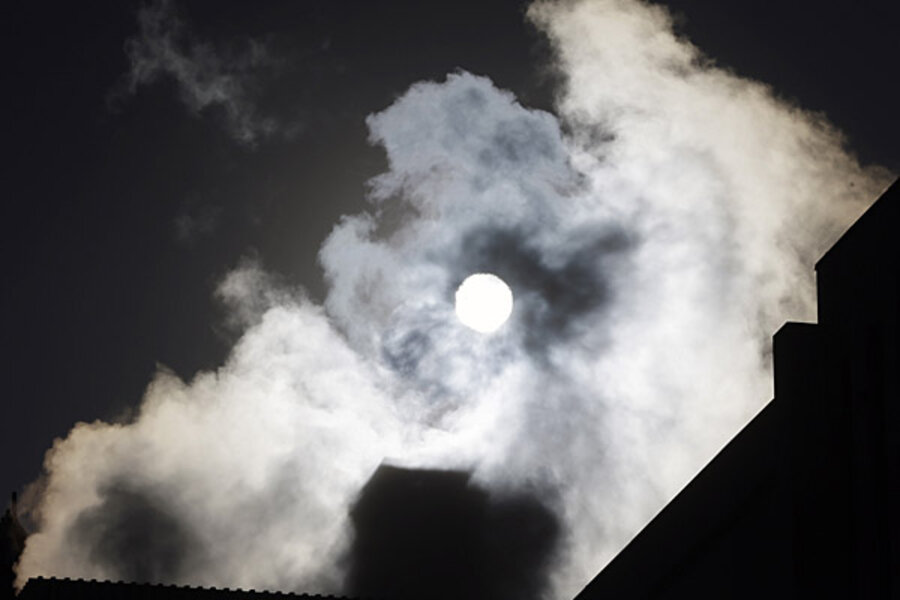Polar air takes toll on Superstorm Sandy survivors
Loading...
| New York
Polar air settled in earnest over the Northeast after trekking through the Midwest, grinding trains to a halt, bursting pipes and bringing further misery to folks still trying to recover from Superstorm Sandy.
In a damaged neighborhood near the beach on New York City's Staten Island, people who haven't had heat since the late October storm took refuge in tents set up by aid workers.
Propane heaters barely kept up with the cold, and workers provided sleeping bags and blankets for warmth on Tuesday night and early Wednesday. The temperature was expected to dip to around 11 degrees before dawn Thursday.
Eddie Saman slept in a tent because the gaping hole in the roof of his home has rendered it uninhabitable — and unheatable.
"It's very cold," Saman said, "and mainly I sleep here next to the heater here."
For Anthony Cavallo, the cold was just another in a litany of aggravations that began when Sandy swept through his Union Beach, N.J., neighborhood and flooded his one-story house with 4 1/2 feet of water.
Still waiting for the go-ahead to rebuild, Cavallo and his family have been living in a trailer they bought once it became clear they couldn't afford to rent.
Wednesday's frigid weather froze the pipes, something Cavallo's 14-year-old daughter discovered when she tried to take a shower at 4:30 a.m. Cavallo spent the morning thawing out the pipes and stuffing hay under the trailer to help insulate them.
"Every day it's something, whether it's frozen pipes or getting jerked around for two months by insurance companies," the 48-year-old security system installer said. "I just kind of want to wake up one day and have no surprises."
The polar air mass trekked from the Midwest into the region on Wednesday, prompting the National Weather Service to issue wind chill warnings across upstate New York and northern New England.
The University of South Dakota in Vermillion offered a third consecutive night of free hotel rooms to 500 students who had to leave when a water pipe froze over an electrical room and damaged components. The cold also caused circuit problems on the Metro-North railroad serving areas north of New York City, creating rush-hour delays that were resolved by late Wednesday morning.
Lows were expected in the double digits, but no higher than the mid-teens overnight in New Jersey and the New York City area. The system reserved the most frigid air and wind chills — a calculation of how cold the wind-whipped air feels to the skin — for New England.
The coldest weather was expected Wednesday and Thursday, after which conditions should slowly moderate before returning to normal, said John Koch, a meteorologist with the National Weather Service regional headquarters in Bohemia, N.Y. For the most part, temperatures have been around 10 to 15 degrees below normal, with windy conditions making it feel colder, he said.
One ski resort in New Hampshire shut down on Wednesday because of unsafe ski conditions — a predicted wind chill of 48 degrees below zero.
In northern Maine, the temperature dipped to as low as 36 below zero Wednesday morning. The weather service was calling for wind chills as low as minus 35 overnight into Thursday.
Keith Pelletier, the owner of Dolly's Restaurant in Frenchville, Maine, said his customers were dressed in multiple layers of clothing and keeping their cars running in the parking lot while eating lunch. It was so cold that even the snowmobilers were staying home, he said.
"You take the wind chill at 39 below and take a snowmobile going 50 mph, and you're about double that," he said. "That's pretty cold."
The cold air has been blamed for multiple deaths.
In northern New Hampshire, a man died Wednesday after crashing his snowmobile while going over a hill on Tuesday and spending a "bitterly cold night" injured and alone on a trail, the state's Fish and Game Department said.







